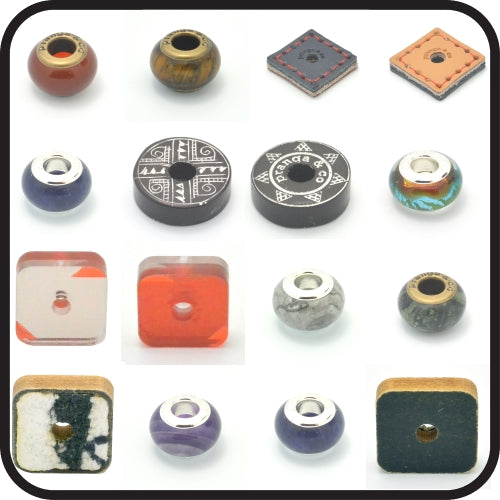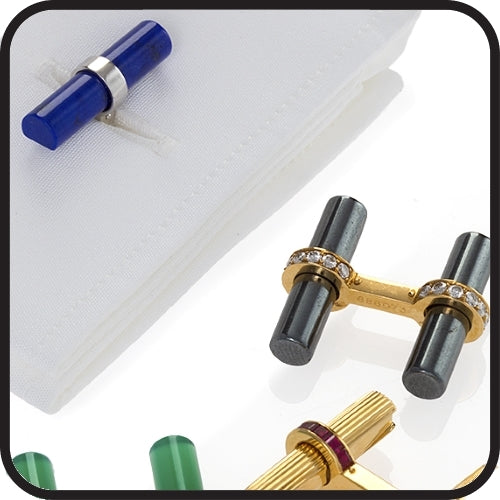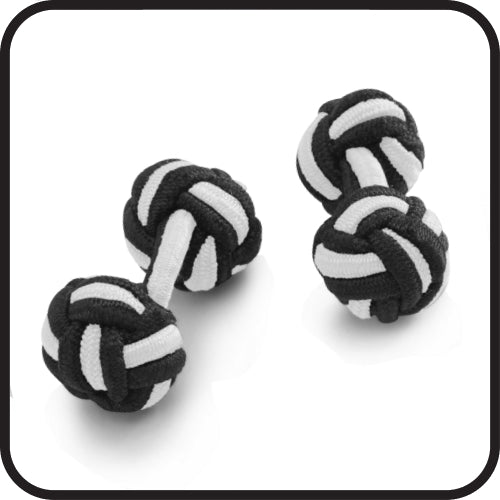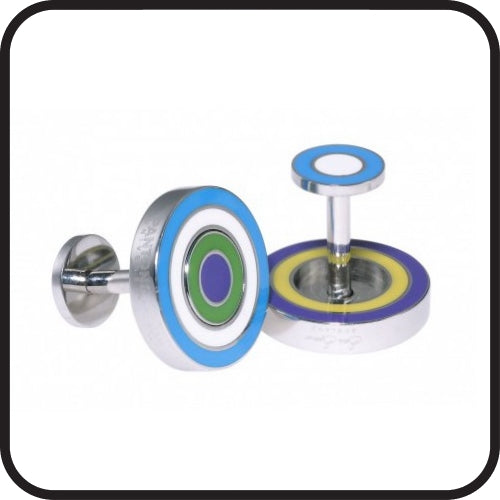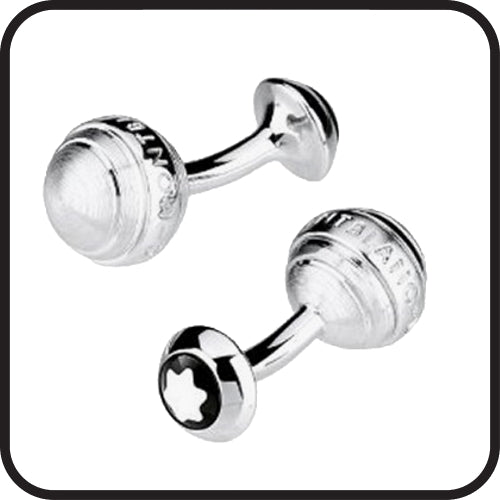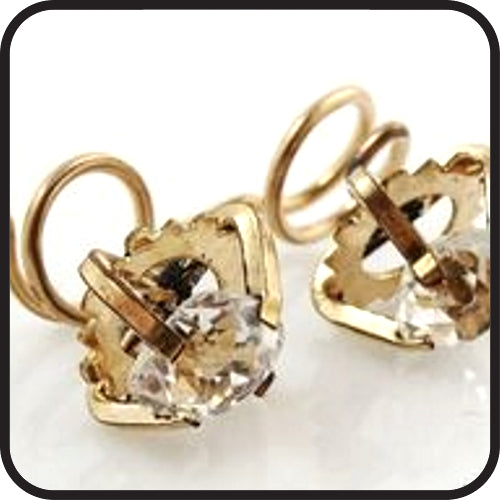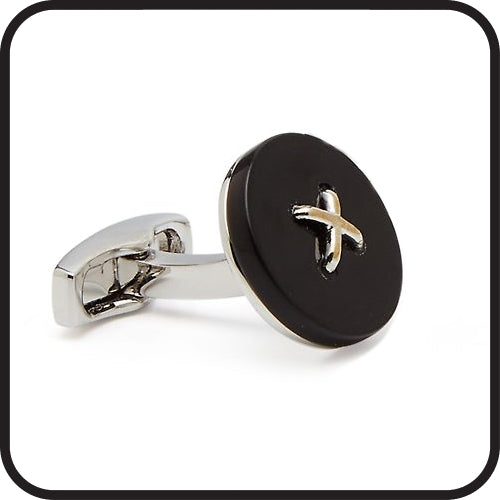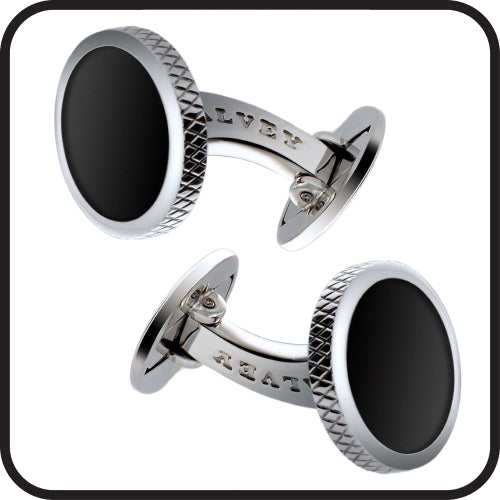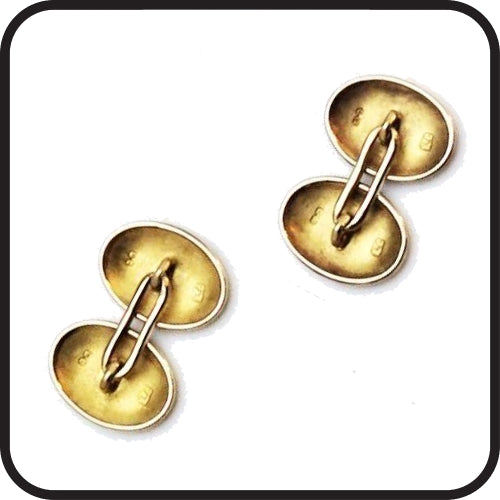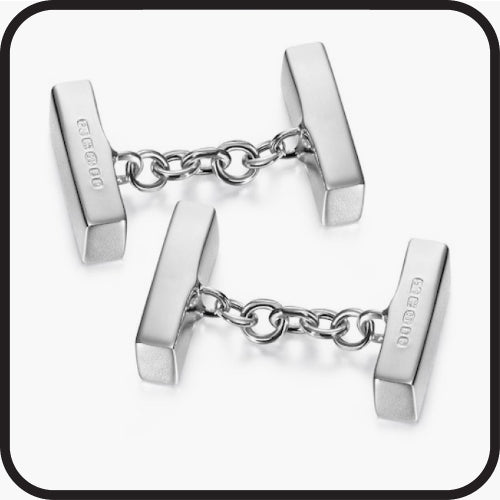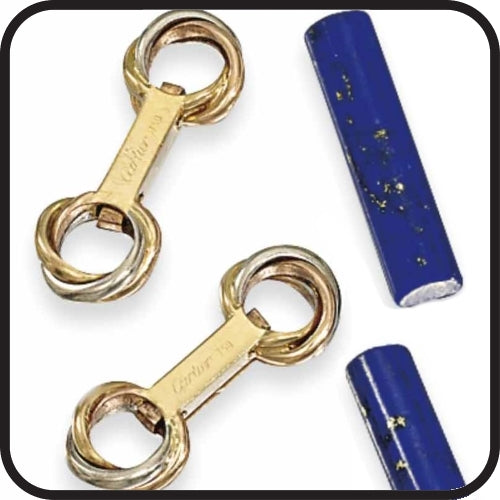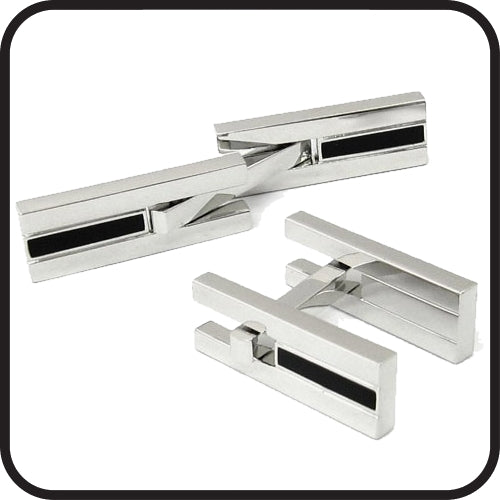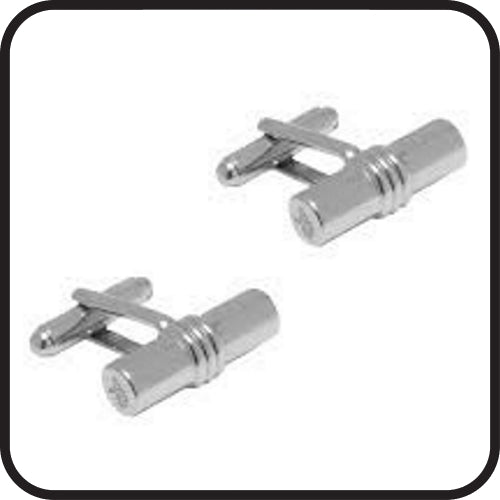The Anatomy of a Cufflink, So Many Variations!
Posted by Daniel Feuer on
I've searched around trying to find some consistent information about cufflink. There are some great sites that talk about the various types, but I see many conflicting statements that confuses particular designs with a type of cufflink. So I decided to attempt a definitive classifications of cufflinks.
A perfect example are Ogham cufflinks. Ogham is not a type of cufflink, but an Medieval alphabet used to write the early Irish language. They were primarily inscriptions found on stone monuments throughout Ireland and western Britain. The same would be true for "Celtic cufflinks" and "Calibre Cut Cufflinks". These are just types of designs can be incorporated in to the face of the cufflink, not types of cufflinks. The face is the part that most people think of when referring to cufflinks.
Using some similar logic, the cufflink can be divided into three major parts: face, backing and connector. I know there are other possible parts of a cufflink, however these are the minimum needed for a cufflink to provide its function of holding cuffs together. Here's what's I defined as the three parts.
Face
This is the decorative, "business end" of the cufflink, the part that others see. It can go by various names such as motif or decoration. The face also serves to hold one end of the cuff together. Common cufflink face types are:
Backing
This is the back of the cufflink which keeps the other edge of the cuff together. There are several varieties of backings including toggles and fixed position, they can be decorative or not. Common cufflink backing types are:
Connector
There will be some type of connection between the face and backing. Again, there are a variety of connectors. Most connectors are one solid piece attached directly to the face and backing, however there are different types with some even detaching. Here are the common connector types:
A perfect example are Ogham cufflinks. Ogham is not a type of cufflink, but an Medieval alphabet used to write the early Irish language. They were primarily inscriptions found on stone monuments throughout Ireland and western Britain. The same would be true for "Celtic cufflinks" and "Calibre Cut Cufflinks". These are just types of designs can be incorporated in to the face of the cufflink, not types of cufflinks. The face is the part that most people think of when referring to cufflinks.
Using some similar logic, the cufflink can be divided into three major parts: face, backing and connector. I know there are other possible parts of a cufflink, however these are the minimum needed for a cufflink to provide its function of holding cuffs together. Here's what's I defined as the three parts.
Face
This is the decorative, "business end" of the cufflink, the part that others see. It can go by various names such as motif or decoration. The face also serves to hold one end of the cuff together. Common cufflink face types are:
- Anker
- Ball (Barbell)
- Baton
- Fabric knot
- Reversible (Sliding and Fixed)
- Wrap Around
Backing
This is the back of the cufflink which keeps the other edge of the cuff together. There are several varieties of backings including toggles and fixed position, they can be decorative or not. Common cufflink backing types are:
- Ball Return
- Coil
- Fixed
- Toggle (Bullet, Football, Torpedo, Whale)
Connector
There will be some type of connection between the face and backing. Again, there are a variety of connectors. Most connectors are one solid piece attached directly to the face and backing, however there are different types with some even detaching. Here are the common connector types:
- Bar (straight, curved, angle)
- Bridge
- Chain
- Interchangeable
- Locking
- Post
- Snap link
So now for a deeper dive into the sub-classes . . .
Does this seem like a complete list? If you think there's anything missing, please let us know in the comments below.
Share this post
- 0 comment
- Tags: cufflink types

